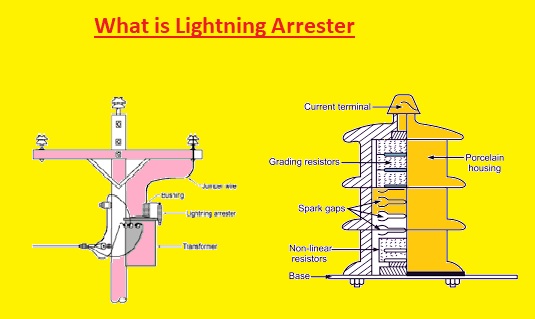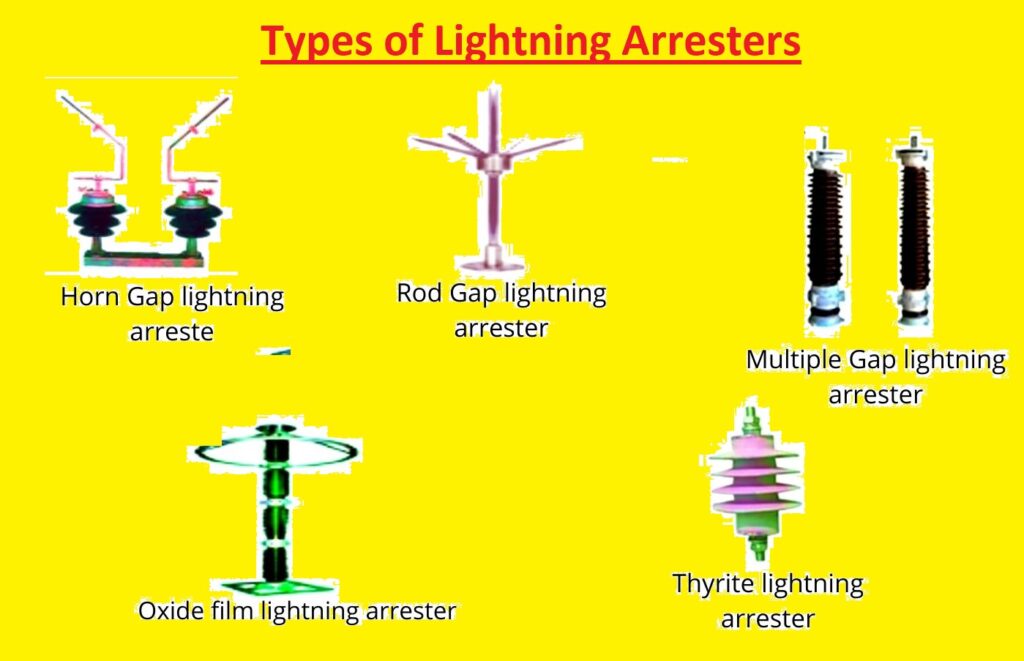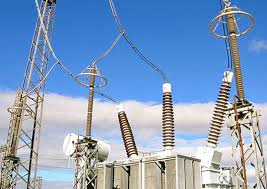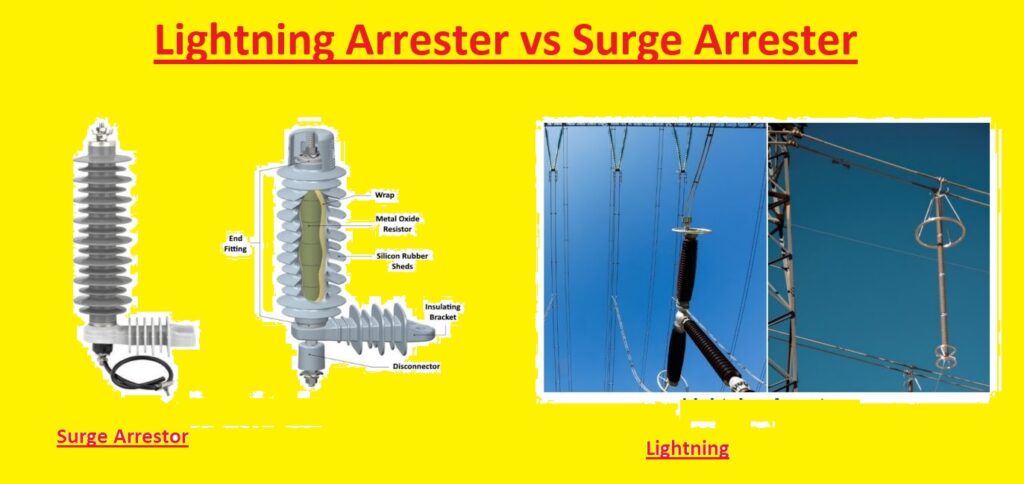Hello guys welcome to the new post. In this post, we will learn What is a Lightning Arrester. Our system is based on electrical systems to power homes, businesses, and industries. But the high power of lightning strikes affects these electrical systems. To protect the system from any damage lightning arresters are used. In this post, we will discuss the details parameters of lightning arresters, their working principle, and the different types. Let’s get started with What is a Lightning Arrester?
What is a Lightning Arrester?
The lightening arrestor known as a lightning isolator comes with an air gap between the electrical wire and ground used on electrical power transmission and telecommunication systems for protection insulation and conductors of a system through the effect of lightening.
The lightning arrester comes with a high voltae terminal and ground terminal. If lightning surges move with the power line to the arrester curent from the surge is diverted through the arrester and in some conditions to earth.
In telephony and telegraphy, lightning arresters are configured where wires add a structure, saving damage to electronic instruments and making sure the safety of components is connected.
Small types of lightning arresters also known as surge arresters are devices that are connected between conductors in power and communication and earth.
Working Principle of Lightning Arresters
The lightning arrester does not save lightning from striking homes or buildings. It is connected between power lines and home, substation or breakers
Lightening rods are different from arresters in such a way that are passive rods and absorb lightning strikes and sed through a connected cable with the ground.
The electrical circuits operate at risk of being affected by a sudden surge in power when using a lightning rod. The lightening arrester comes with a high voltage terminal and ground terminal.
The current spike naturally needed to flow to electrical components. It is where the lightning arrester performs. It diverts extra curent in a predetermined location.
Types of Lightning Arresters
Rod Type Lightning Arrester
It is a simple type of arrester. In this arrester, there is air gap between the ends of two rods. One end of arrester is connected to the line and 2nd end of the rod is connected to the ground
The gap setting of the arrester must be such that it breaks before the damage. if high voltae exists on line, gap sparks and fault current to earth. So devices connected are protected from damage.
Sphere Gap Arrester
In this type of arrester, the air gap is given between different spheres. On the spheres is connected with a line and the other sphere is connected with the ground.
The spacing between the two spheres is small. The choking coil is inserted between the phase winding of the transformer and sphere is connected with the line.
The air gap between the arrester is configured in such as way that discharge not occur at normal operating conditions. The arc passes through the sphere when heated air closes the arc causing a rise in up direction and lightening till it is interrupted automatically.
Multiple- Gap Arrester
The multiple gap arresters come with a series of small metallic cylinders insulated from each other and parted through air gaps. The first and last of the series is connected to the ground. The number of gaps needed is based on line voltage.
Lightning Arrester in Substation
Lightening arresters used in substations are larger-sized devices, that come with porcelain tubes of longer feet and some inches in diameter, normally filled with discs of zinc oxide. The safety port on the side of the device’s vents’ inner explosion occurs occasionally without shattering the porcelain cylinder.
Lightening arresters prevent lightning damage to devices connected due to high voltage. The lightning arrester offers a low impedance road to the ground for lightning current. It restores to normal working conditions.
Parameters for Lightning Arrester Installation in Substations
- Location: it must be connected at a position to offer an effective area and protect vulnerable devices of the substation. The height and structure of lightning masts or other mounting structures should be configured to attract lightning strikes from components.
- Arrester Ratings: The connected lighting arrestors must be connected on the value of the substation’s voltage, system design, and the magnitude of lightning surges. The arrester ratings must be accurate according to effective protection.
- Grounding System: Correct grounding is good for the effective operation of lightning arresters. A well-designed grounding system has the safe dissipation of lightning currents to earth and decreases the chances of damage to substation devices.
- Maintenance: it needed proper maintenance and inspection.That are visual inspections, testing for proper operation, and cleaning to avoid contaminants that can affect their performance
How Lightning Arrester works
A lightning arrester works by offering a low-impedance path for electrical surges, such as those resulting from lightning strikes, to safely discharge the excessive energy to the ground. Some steps explained for working
- In normal when the system works accurately arrestors have high resistance. it did not result curent and did not affect the system
- When any surge or lightning strike casues the voltage of the system to increase suddenly then the value of rated volts of arrestors.
- As a result, lightning arrest impedance changes with the use of metal oxides or silicon carbide blocks used in arrestors
- There is a low resistance path provided by arrestors and surges move away from this path to the ground
- After removal of the surface system becomes normal and gain restores its high resistance path
Differences Between Types of Lightning Arresters
Electrolytic arrester
- An efficient and reliable lightning surge arrester.
- Efficient and reliable
- expensive
Rod Gap Arrester
- A simple and effective method of surge diversion techniques.
- reliable than rod-gap arresters
- Larger and more costly than rod-gap arresters
Valve-type lightning arrester
- A non-linear surge suppressor or diverter.
- Costly and efficient method of the surge arrester
- unreliable at high voltages
Metal-Oxide Lightning Arrester
- Contains zinc oxide (ZnO) as the metal-oxide resistor.
- Effective
- unreliable at high voltages
Oxide Film Arrester
- Consists of lead peroxide pellets coated with litharge configured in a column and enclosed in a tube.
- Les reliable as other types of arresters
Sphere Gap Arrester
- Two spheres with a very small air gap between them.
- Simple
- Not as reliable as other types of arresters
Horn-Gap Arrester
- Two metallic plates bent to form a horn shape.
- Simple to use
Multiple Gap Arrester
- Many insulated metal cylinders are separated from each other by an air gap.
- Effective for protection against dangerous high voltage
- bulky and costly
Impulse Protective Gap
- A very small impulse ratio even less than unity.
- Good for protection against dangerous high-voltage
- Can be complex and expensive
Thyrite Lightning Arrester
- An inorganic ceramic material.
- Effective for protection against dangerous high voltage
- Can be damaged by high temperatures
Autovalve Arrester
- Flat discs of a porous material stacked one above the other and separated by thin mica rings.
- protection of dangerous high voltage
- bulky and expensive
Characteristics of an Ideal Lightning Arrester
- it does not draw curent in the normal operation
- Any voltage that is not normal over the breakdown value should result in breaking within some seconds. So it can provide conductive for current to go to ground
- In case of high surge, it can carry discharge curent without any damaged
- The power frequency current of breakdown interrupted fastly transient voltage is less than the breakdown value.
Location of Lightning Arrester
- Substation Entrances: It must be connected at the entrance of the substation. it connects incoming power lines and substation devices to interact with any surges
- Distribution Feeders: it is also connected at the start of distribution feeders. These feeders carry power from the substation to distribution transformers and users’ end. distribution transformers and other devices protect by arrestor from
- Transformer Bushings: it is also connected to the bushings of power transformers. Pushing are connection where the transformer is connected to the system. it helps to protect the transformer from lightning-induced surges.
- Switchgear and Circuit Breakers: This device is also connected at entry or in the switchgear and panels of brakes.
- Transmission Lines: it is also connected with transmission lines at some distance. It helps to reduce lighting surges from different instruments connected with transmissions like transformers and circuit breakers..
Lightning Arrester vs Surge Arrester
FAQS
What do you mean by a lightning arrester?
A lightning arrester called a surge arrester or lightning diverter, is used to protect electrical instruments from high voltage due to lightning discharge or electric surge, by discharging it to earth.
What is a lightning arrester and its types?
A lightning arrester protects electrical systems from the damaging effects of lightning strikes and electrical surges. The main types of lightning arresters are rod, electrolyte, sphere, horn, multi-gap, and metal oxide.
What is an arrester used for?
An arrester, that is a lightning arrester, is used to protect electrical devices and systems from lightning strikes and electrical surges. Its main function is to limit voltage, divets lightening and protect instruments connected in parallel combination
What is a lightning arrester in electricity?
- In electricity, a lightning arrester is a protective component used for the protection of power lines, homes, and structures from dangerous power surges It detects and diverts lightning surges away from sensitive electrical components, avoiding damage caused by high voltage spikes.
-
Where is a lightning arrester placed?
- Lightning arresters are normally connected close to the transformers connected at the substation. In the high-voltage system, it is connected with bus bars, transformers, generator lines, circuit breakers, circuit breakers, etc.
-
What is the range of a lightning arrester?
- it has a coverage angle of 45 degrees and can handle strikes at a distance of three meters
-
What are the three types of lightning arresters?
- The three 3 types of lightning arresters are:
- Rod Type Lightning Arrester (Franklin or conventional)
- Gapless Lightning Arrester (Metal Oxide Varistor or MOV)
- Early Streamer Emission (ESE) Lightning Arrester
-
Which lightning arrester is mostly used?
- the rod-type lightning arrester, also called Franklin or conventional lightning arrester, is mostly used.
-
What are the advantages of a lightning arrester?
- Easy to use
- Prevents lines from any damage by lightning
- Less electromagnetic intefernce
- It avoids outlet surges
- It is used to protect outdoor devices connected at substation










